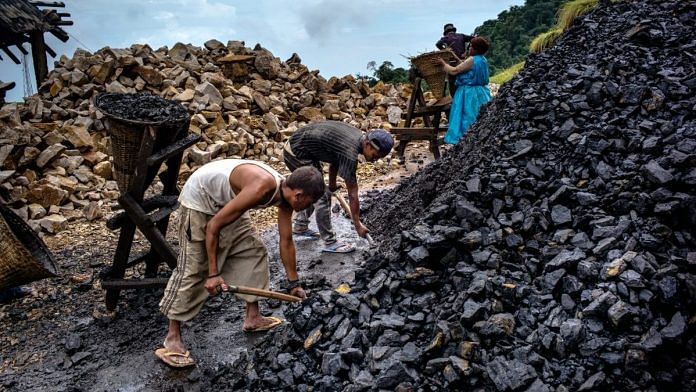New Delhi: India may spin off units of Coal India Ltd., the world’s largest coal miner, into separate listed companies to boost competition and raise government funds, according to people with knowledge of the matter.
The state-run company and the coal ministry are studying a proposal by the finance ministry’s Department of Investment & Public Asset Management to list four of Coal India’s biggest production units, as well as its exploration arm, said the people, who asked not to be named as the plan isn’t public. The development is in an early stage and it was unclear how long it may take, the people added.
Prime Minister Narendra Modi’s government has sought to sell some state assets to raise funds, and these
will continue to remain a priority, Finance Minister Nirmala Sitharaman said July 5, setting a record target of raising 1.05 trillion rupees ($15 billion) in the current fiscal year. Spinning off Coal India subsidiaries would also lead to greater competition in the domestic coal market and improve corporate governance, the people said.
A spokesman at Coal India didn’t respond to requests seeking comment, while press officials at the coal and finance ministries declined to comment.
The four units — Mahanadi Coalfields, South Eastern Coalfields, Northern Coalfields and Central Coalfields — account for more than three-fourths of the company’s output, while constituting less than half of its workforce. The fifth unit would be Central Mine Planning & Design Institute.
India’s state run coal giant has been unable to meet growing demand despite abundant resources. Coal India produced a record 607 million metric tons in the last fiscal year to March, falling short by 22% of a target proposed in 2017. The goal has been revised a few times since then, but output was still just below a revised target. Meanwhile, imports of the fuel surged to a record over the same period.
Shares in the miner, which has a market cap of about $20.7 billion, are heading for a fifth straight year of declines. The government holds almost 71% of the company.
India, the world’s second-largest coal consumer after China, depends on Coal India for about 83% of the domestic production. The miner has consistently fallen short of production targets, while an overworked railway network has hampered transport of the fuel.
The government’s top planning body, NITI Aayog, proposed in 2017 that Coal India be broken up so its units can compete against each other. It was dismissed at the time by Coal Minister Piyush Goyal, who said the plan doesn’t reflect government policy.
Also read: Under Modi govt, Coal India’s market cap fell by Rs 85,000 crore, almost 40%, in 4 years




The most important thing is to run the company as a buisness concern,which is far from the present situation.Super Bosses ,corruption at ALL levels, indiscipline and no work culture are the factors for this state.
More productive would be to improve corporate governance norms within the company. Some time back, a minority shareholder, an institution from Britain, wanted to sue Coal India for suppression of minority rights. When CIL sells coal to discoms, they should pay for it punctually. The dominant thinking five years ago, belying expectations, was that there would be no privatisation but the PSUs / PSBs would be models of efficiency and the highest standards of corporate governance. Not sure if that has happened.